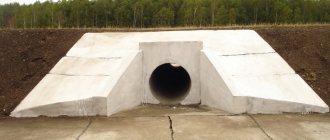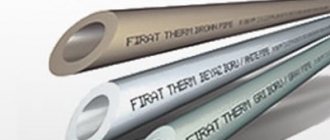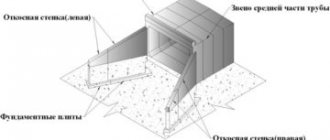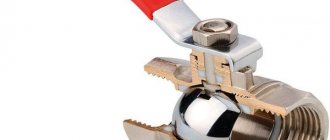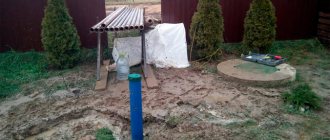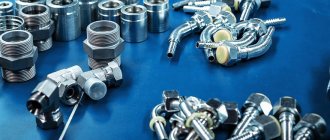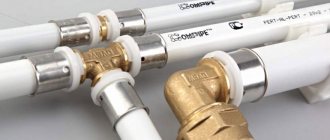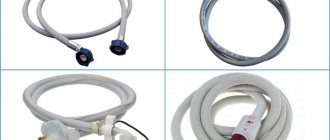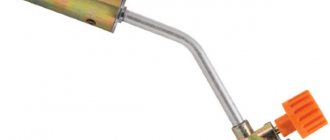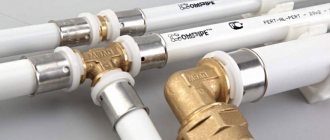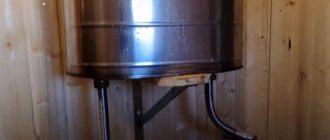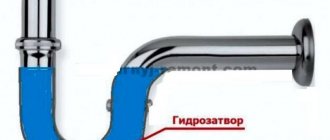The modern market for plumbing equipment offers a huge range of faucets, varying in shape, type, functionality and price. However, the main criterion that determines how long the equipment will last is the choice of material from which the model is made. Today, products made of brass, copper and stainless steel are considered optimal in terms of service life and cost. At the same time, the quality of the mixer largely depends on the type of coating that protects the surface.
Characteristics of brass
Brass alloy is produced by combining zinc with copper, to which nickel, iron, manganese, tin, and lead are sometimes added.
Typically the material consists of 70% copper component, with 30% zinc component. Almost half of the produced alloy consists of recycled zinc. Technical metal contains about 50% zinc part with 4% lead. There is also a special type of brass connection called “tompak”. The copper component in it reaches 97%, and the zinc component ranges from 10 to 30%. This compound makes excellent jewelry, various artistic products, insignia, and fittings.
A couple of centuries ago, brass alloys were often used as fake gold, which was achieved by using pure zinc rather than ore. This connection was very difficult for inexperienced users to recognize. It has become actively used in various industrial fields due to its unique properties. These alloys have high ductility, abrasion resistance and good corrosion resistance.
Why veneer furniture?
Wood is considered the most expensive and noble material for making furniture. However, along with its advantages, wood has a number of disadvantages.
- Firstly, this is the relatively high cost inherent in high-quality wood, well-dried and coated with protective and decorative compounds.
- Secondly, exposure to high humidity, which limits the use of this material, for example, in bathrooms.
- Thirdly, over time, if not carefully cared for, wood can warp, dry out, and change its shape and size.
With the help of veneer you can give furniture a more expensive, noble look of wooden furniture. Unlike solid wood, veneer does not dry out, does not deform, and is not affected by moisture and temperature. That is, as a result of veneering, a material is obtained that is outwardly indistinguishable from natural wood, and at the same time strong, durable, and quite easy to maintain. Furniture made from decorative panels for living rooms, hallways, and dining rooms is not inferior in appearance to the same furniture made from natural wood. At the same time, its service life and resistance to climatic influences will be significantly higher, and reasonable prices will make furniture for home and office accessible to a wide range of consumers.
Single lever or single lever models
These models have only one handle. It is she who regulates the water flow parameters. It is worth noting that the water temperature can be adjusted either separately or simultaneously. Such devices are also called one-armed and single-grip. If we consider the operating principle of these mixers, they are divided into ball and cartridge. The latter have become more widespread. If the control handle of a product is located horizontally, then it is called joystick.
The main advantages of single-lever designs are comfortable operation. They are very easy to operate with one hand. And such products can last for many years. True, the last factor strongly depends on what kind of water flows in the pipes, that is, on its quality. This is where the main disadvantage of single-lever models comes from. Thus, in urban networks, water enters apartments and houses with a large amount of garbage, which cannot be seen with the naked eye. Because of this, mixers break down ahead of schedule. For this reason, when using single-lever products, it is better to install a water purification filter. After all, if a mixer of this type breaks, you will have to buy a new cartridge for it, the cost of which is quite high.
As with valve models, single-lever faucets also have improved models. They are distinguished by the presence of a function that allows you to save water. It consists of two operating modes. One mode is for saving, and the second supplies water with a strong flow. But in order to switch to it, you need to make some effort to overcome the resistance that arises when trying to fully open the lever.
Wood boards
Let's start with furniture made from wood panels. MDF, chipboard, laminated chipboard, fiberboard are materials based on wood. It's just a small tree. In the form of shavings, fibers, sawdust.
MDF is a type of fiberboard made from fine chips (almost wood flour) by hot pressing. Wood fibers are treated with special binders before pressing. For this purpose, natural products lignin and paraffin are used, which do not emit harmful substances. Moreover, its gluing requires much less adhesive than chipboard; the environmental friendliness and safety of the MDF material ultimately depends on this. Another distinctive feature of MDF is its density, which almost matches the density of natural wood. MDF is an environmentally friendly, dense and flexible board (despite its decent thickness), which allows you to create curved surfaces, for example, the facade. It is a material that can be easily processed, which is very valuable in the manufacture of furniture that requires grace and fine lines. MDF does not crumble during milling - this allows you to make cutouts for fittings and create patterns and carvings on the surface. Carved cabinets and headboards are all made of MDF. MDF holds screws and other fasteners well. Due to paraffin impregnation, the MDF board has water-repellent properties, which allows you to expand the scope of its application. Due to the fact that the technology for manufacturing MDF is not cheap, often in the production of furniture only facades are made from MDF, and walls and internal parts are made from chipboard. Furniture made entirely from MDF is quite expensive. MDF is also immune to various types of fungi. But this material reacts very painfully to temperatures above 70 degrees Celsius. It swells, warps, loses its shape, and the decorative coating bubbles and peels off. That is why it is recommended to protect MDF furniture from heat and not place it near a working stove, oven or other heating devices.
Chipboard - chipboard - consists of wood processing waste, which includes sawdust, large shavings, etc., pressed and glued together by high-temperature pressing with the addition of binding resins (phenol and formaldehyde). On the outside, these pressed sawdust can be covered with decorative layers: laminate, melamine, veneer. Based on their quality characteristics, chipboards are divided into 3 grades: 1st grade of board is made from selected sawdust, usually from one type of wood. Its surface is perfectly smooth, without chips. The board is decorated on both sides by applying laminated film or veneer. Grade 2 is characterized by minor defects on the surface in the form of chips and scratches. It can be with or without cladding. Grade 3 – these are slabs with significant defects on the surface. They do not require cladding and are used only for construction and auxiliary purposes. Chipboard is afraid of water. Therefore, in conditions of high and constant humidity, the chipboard will begin to crumble. It is also worth noting the fragility of such a plate. Chipboard does not tolerate fine processing; it is difficult to make shaped parts from it.
LDSP is an abbreviated name for laminated chipboard, the surface of which is treated with a special film based on thermosetting polymers (this is a type of paper-resin film). I think everyone has seen laminated paper. The board is laminated in the same way. Only the slab is thicker than paper, and its ends remain open. Often such a slab is simply called “laminate”. This applies to both the name of the popular flooring and the furniture “made of laminate”. However, laminated chipboard and laminate are not the same thing, they are two different coatings.
Laminating film is made in a variety of ways. The surface of laminated chipboard can be smooth, embossed, wood-like, or shagreen. The color palette has no boundaries, since the film can be painted in any color. Laminated chipboards are divided into several groups:
- smooth solid colors (e.g. white, yellow, blue);
- textured solid colors (e.g. textured white, aluminum);
- standard wood tones (e.g. beech, alder, cherry);
- imitation of rare wood species (for example, Winchester oak, Merano, Cordoba);
- glossy decors;
- veneered decors;
- fantasy tones with drawings and patterns.
The last three categories, due to their high cost, are used primarily for the production of facade parts.
Laminated chipboard is present in almost every home, because most often it is used in the manufacture of various furniture, both economy class and more expensive furniture. Products made from laminated chipboard are resistant to moisture due to the lamination coating, unlike ordinary wood. Therefore, furniture made from laminated chipboard is well suited for the kitchen, where it will not dry out or crack. It can often be found even in bathrooms. Moisture-resistant laminated chipboard undergoes a special treatment with paraffin emulsion, and also contains wood fibers with a special impregnation that prevents the composition from swelling under the influence of moisture. However, you should not leave moisture on the surface of the furniture for a long time, as it can flow into the cracks between the slab and the edging, and water entering directly under the decor layer (laminating film) will cause swelling and softening inside the slab. If you buy furniture made from laminated chipboard, you can easily later purchase the necessary elements, and they will be exactly the same color, unlike wood, where the shade may differ from batch to batch.
Chipboard has disadvantages, like any other material. The main negative characteristic of particle boards is the presence of formaldehyde resins, which, in high concentrations, have a negative effect on human health. That is why it is necessary to ensure that the ends of the finished product are carefully closed with an edge. Another significant drawback is the susceptibility of chipboard to swelling (with the exception of moisture-resistant categories). This problem is eliminated in the same way as the previous one - an edge is applied to all visible ends, protecting the internal composition from moisture penetration. The laminated surface itself, if there are no cuts or chips on it, is moisture resistant.
Wood chip boards are very popular among furniture manufacturers. Firstly, they have a low cost compared to high-quality arrays. Secondly, they are easy to process. Chipboard is a ready-made material that just needs to be cut according to the cutting chart and an edge applied to the ends. Thirdly, wood boards are quite strong and durable; they are not subject to drying out or curling, like natural wood, which requires a long drying time. Fourthly, laminated chipboards have a wide palette of decors. The colors are so varied that they will fit perfectly into the restrained interior of a study or into a bright children's room. Fifthly, furniture made from chipboard is easy to care for. But this is more important to us, furniture buyers.
How to spot a fake
Due to the fact that now many products, including faucets, are counterfeited, it makes sense to figure out how to distinguish a branded product from a counterfeit analogue. First of all, you need to carefully inspect the galvanic coating. The presence of any scratches or black spots is unacceptable. Some manufacturers label their products for added protection. This may be the company logo, which marks the handles of the faucets and the back surface of the body. Under no circumstances should you trust sellers who persuade you to purchase products without such labeling. In addition, branded faucets are sold in original packaging. Therefore, an ordinary “cardboard” or bag is evidence of counterfeit products.
A company name printed with a typo should also be alarming. Moreover, each branded product must have its own warranty card with the addresses of service centers. If there is no such coupon, then it is better to refuse to buy a mixer altogether.
In order to extend the service life of the mixer, it is advisable to install an additional filter for water purification. This is especially true for new buildings. Water enters them through new pipes, which, as a rule, contain quite a lot of garbage and various technical impurities. It is better to install in-line filters. Naturally, this process is expensive, but you will be confident in the reliable operation of the mixer.
Let us note that domestically produced faucets, which are equipped with the usual rubber gaskets, tolerate contact with low-quality water well. Domestic models are even better because they can be disassembled and repaired. This number will not work with foreign analogues.
When purchasing a faucet, special attention should be paid to the connecting pipes through which water will be supplied. Tubes can be rigid, made of copper or brass, as well as flexible, which are metal-polymer hoses
For hard tubes you need to buy an additional adapter. The latter are not always included with the mixer.
Video. Installing a GROHE bathroom faucet
A kitchen faucet is an actively used appliance. It keeps the water closed, and when open it mixes the cold stream with the hot one and sets the pressure. These factors, together with incorrect handling, contribute to rapid wear. Therefore, when choosing, you need to take into account not only the appearance, but also the reliability of the product, agree.
In order to purchase a reliably working product, you need to know the structure of a kitchen faucet. In addition, this information will help you understand how difficult or simple the repair will be. Will the owner be able to do it on his own or will he need to call a plumber?
You will learn everything about the design features of kitchen faucets from our article. We have described in detail the varieties presented to the consumer by the market. For visual perception of the information, we have attached diagrams, a selection of photos and video repair instructions.
The name “mixer” directly indicates the main function of this plumbing equipment – mixing water. The device is connected to cold and hot water supply pipes, and its task is to supply water in the required proportion.
Adjustment is carried out manually by the user. In addition to adjusting the temperature, the mixer also adjusts the pressure of the water stream.
Mixer - a device that combines two taps in a single body, connected by separate pipes to the hot water and hot water pipelines
Materials used in production
A modern kitchen faucet can be made from the following materials:
- metal alloys (bronze, brass, silumin);
- polymers;
- ceramics.
A metal faucet is the most popular option for use in the kitchen. Brass and bronze do not oxidize or corrode from regular contact with water. In addition, these materials are chemically neutral, which means that deposits of mineral salts do not occur on their surface.
Image gallery
Methods of installing mixers and the number of consumers per device
Faucets can be fixed on sinks, sinks, bathtub frames or bidets, as well as on countertops - for this, holes must be prepared in all these products. The second mounting method is mounting on the wall or vertical panels of the shower stall. Hidden installation of some faucet models is also possible.
The number of consumers is the number of channels through which water can be supplied from one mixer. It can vary from 1 to 3 - through a spout, a watering can on a flexible hose and a permanently attached watering can. Flow redirection is controlled using a switch, which can be a lever or push-button.
What materials are mixers made from?
Truly high-quality faucets are made from brass, a material that is a copper-based alloy. It accounts for up to 60%. Zinc is usually added to copper, and metals such as:
- lead;
- manganese;
- nickel;
- iron;
- tin;
- aluminum.
Brass is resistant to constant exposure to water and is safe for the human body. There is one thing - before buying, you should ask about the lead content. The norm suggests 2.0–2.5%, but some manufacturers increase the presence of plumbum to 5-6%. This is not dangerous to health, but problems may arise when using the mixer. The risk of “hot” cracks increasing, leading to leaks or even bursting of the faucet.
What are sink and shower faucets made of besides brass? Chinese models are most often made from Zamak (in our country this composition is better known as TsAM). Its basis is zinc alloyed with aluminum, copper and magnesium. This material is much cheaper, so manufacturers can set low prices for the final product. But in terms of reliability and durability, Zamak is significantly inferior. Additives that are added to tap water corrode the faucet body relatively quickly.
As a result, leaks will form that will need to be repaired. Typically, parts that are not in constant contact with water, such as handles, are made from TsAM. This alone allows you to seriously reduce the cost of the mixer without losing quality.
How to check - brass or Zamak?
It is not always possible to be sure that the model is made of brass. Individuals are dishonest about the quality of their product, indicating false information regarding its composition. Faucets made from Zamak are usually whiter and have a rougher surface. In addition, they are much lighter, although not in all cases. Cunning counterfeiters sometimes put a metal ball inside to weigh it down, so it’s better not to rely on weight.
In general, an original bath, shower or kitchen sink faucet from a well-known brand contains an engraved or laser-printed logo. There is no such sign on fakes, since its application is too expensive and deprives the fraud of any meaning.
Sputtering
The answer to the question of what faucets are made of will be incomplete without mentioning the coating of the body and faucet. The surface of the device can be covered with almost any material, including:
- chrome (Grohe Euroeco 32734000, Lemark Pramen LM3306C);
- copper (Migliore Princeton ML.PRN-802 Ra, Edelform Mollis ML1812C);
- bronze (Lemark Vintage LM2806B, Elghansa Retro 2702754);
- gold (Cezares Elite LSM1-03/24-Bi, Migliore Prestige ML.PRS-744).
The quality of spraying plays an important role in the issue of durability. Most often, chrome is used, giving the mixer a modern appearance. If you are more interested in noble “antique”, check out the models covered with gold, bronze or copper. The surface of the product should be as smooth as possible. If, as a result of the inspection, unevenness, sagging, or even uneven color is observed, it is better to refrain from purchasing.
Execution and equipment
Naturally, it is not enough just to know what faucets are made of. The level of assembly does not always correspond to the quality of materials. Before purchasing, you should carefully inspect the body and faucet. Ask to disassemble the faucet as much as possible to evaluate the connecting parts. Threads and edges must be smooth and clearly defined, sealing gaskets must have a uniform texture.
When choosing a shower mixer, pay attention to the quality of the shower head and nozzles. For the production of the former, plastic is usually used, for the latter - silicone. These are non-toxic materials that are easy to clean and do not become covered with limescale. Naturally, before visiting a regular or virtual store, you should clarify the parameters of the water pipes and shower hose. This will save you additional headaches during the installation process.
For anyone who wants to purchase a bath/shower faucet that does not require repair or replacement after just a couple of months of use, we recommend products from well-known European brands. These include Jacob Delafon, Lemark, Grohe, Cezares, Geberit and Hansgrohe. Their products are always certified, accompanied by detailed instructions and, most importantly, a two-year guarantee.
Types of faucets
In order to understand how to choose a high-quality faucet for a bathroom with a shower, you need to have a clear idea of what they are, how they should be attached and what functions they perform. To facilitate the selection process, mixers are divided into the following types:
1) For its intended purpose:
- low spout faucets. It can be short or long. These faucets have a water switch for the shower and a spout.
- shower mixer. Mainly used in shower stalls. A distinctive feature is the absence of a spout and a water flow switch.
- universal models. It is equipped with a long spout and can be used for a bathtub and a sink at the same time. An excellent option for small bathrooms.
2) By type of fastening:
mortise Mounted on the side of the bathroom. Such models look beautiful due to the fact that the hose is hidden under the bathtub, but if replaced with a new one, difficulties may arise. In such models, it is the hose that often fails.
faucets on a stand. Typically used for free-standing bathtubs. They are the most expensive option. Pipes are brought directly from under the floor.
Wall-mounted mixer. The most commonly used models. Equipped with a long or short spout and a hose with a watering can, which are hung on the wall.
3) By design they can be divided:
Two-valve. Such faucets have two handles - for bitter and cold water. The water supply is carried out through a valve axle box, which shuts off or opens the flow. The main advantages include quick temperature adjustment and ease of installation. However, such faucets constantly require replacement of the gasket, otherwise it leaks. If you have meters installed, then such a purchase will be expensive, because until you set the desired temperature and regulate the flow, a lot of water will flow out.
Single valve. They have one lever, through which the total water supply is regulated. Convenient because you can control the flow and temperature at the same time. Many models have valves that save water supply. The main disadvantage is that if it breaks, you need to replace the entire module.
Contactless. Water supply occurs automatically using infrared sensors. They save water consumption, but run on electricity or batteries, which can sometimes lead to difficulties in the event of a power outage or when batteries are missing. Not suitable for bathtubs, only for sinks.
Water mixing devices
For each method of controlling mixers, there is a special device that is built into the body of the plumbing fixture and provides the procedure for mixing cold and hot water. The following types of control devices are currently used:
- faucet axle box - such a device is used in models equipped with valves and has two modifications: ceramic and rubber;
- cartridge - a cylindrical mixing device for joystick (lever mixers), made using metal-ceramic plates;
- cartridge thermostat - this device is designed in such a way that when the water temperature changes, its constituent elements independently react to this process and, due to the presence of self-expanding materials in their composition, independently increase or decrease the flow of cold and hot jets;
- sensor - in this case, the mixer control device is responsible only for the supply of the jet, and its pressure power and temperature, depending on the configuration of the plumbing fixture, are controlled by faucet boxes, cartridges or thermostats.
That is, in fact, there are currently 3 effective methods for mixing water, since the sensor performs other functions, although mixers with it are separated into a separate type.
What materials are modern faucets made from?
When choosing a new faucet, you need to find out what material it is made of.
Please note that the heavier the installation, the longer it will last you
At the moment, manufacturers most often use the following materials:
- Plastic. Such mixers are not expensive, easy to install, and not heavy. But their huge disadvantage is that they will not serve you for many years and can break at the most unexpected moment.
- Alloy steel. Such faucets are resistant to corrosion, however, this model can be found less and less on the market, because... Their production has been reduced due to the complexity of processing the material. In addition, they have a short service life.
- Silumin is a special alloy of aluminum and silicon. It does not corrode, but is a fairly brittle material.
- The most durable and popular material is brass. An alloy of copper and zinc is added to it in such proportions as not to harm human health. The top layer of brass faucets is nickel or chrome plated. Chrome plating increases the service life of the product.
Additional elements (watering cans, handles) of the mixers are made of ABS plastic - it is quite durable and will last a long time.
Which shower switch is best?
If you are buying a shower faucet, then pay attention to the switch. It is better to choose a faucet with a ceramic switch. This will eliminate two problems with mixers with diverters at once:
- The spring is activated while using the shower - at the most inconvenient moment you have to constantly monitor the position of the diverter.
- When using a faucet, water drips from the shower head - this is caused by dried out gum.
Diverter with spring and rubber band Ceramic divertor
The difference between copper and brass
Copper has features that make it popular in the manufacture of various decorative elements. In addition, it has good electrical parameters, as a result of which it is used in the manufacture of electrical devices. At home, you can distinguish copper elements from brass by several criteria:
- color;
- hardness;
- marking;
- area of use.
Color
To determine the metal, it must be cleaned. The metal surface is freed from contamination using a solution of ordinary water and vinegar. This removes not only dirt, but also oxidative film. The product being tested is carefully examined under a white light source. A brass item differs from copper by simple visual observation. A copper item will have a brownish-red color with a uniform appearance, while brass will appear lighter, with multi-colored shimmers. This heterogeneity indicates the presence of several metals in the composition, which determine the color shade. It is practically impossible to detect copper under a yellow lamp or in daylight.
Hardness
To understand how to distinguish copper from brass, you should lightly tap them. When a copper product hits a hard surface, it produces a muffled sound. This is due to the special softness of the metal. Brass objects are characterized by a sharp, ringing sound of impact. This check is used for large items.
Marking
Some items have special markings on their surface. For brass products, the letter “L” is used. Copper elements are practically not marked. Some parts may be marked with the letter "M" with a numerical addition. In this case, special reference books are used to determine the specific composition of the material.
Application area
These materials are also distinguished by area of use. Brass alloys are often used for the manufacture of various components and parts. Copper is an ideal element for the production of electrical wires and other electrical parts. This is due to its excellent electrical parameters.
Purpose
Pipeline systems cannot be open all the time they are in operation. Any water supply system must be shut off at least twice: at the point of use and at the point where water enters the building or apartment. A large plumbing system must have shut-off valves that allow you to shut off any of its parts individually. Reliable, convenient and durable ball valves are becoming increasingly widespread in all areas of human activity.
The scope of application of ball fittings is very extensive:
- In industry. Pipelines and shut-off ball valves are found everywhere - in hydraulic and pneumatic drive systems, fuel, gas, chemical reagents, and water supply pipelines.
- In the infrastructure of cities and towns - in main heating systems, water and gas supply.
- In everyday life - in any house and apartment there is a pipeline for supplying gas, hot and cold water, heating.
Materials from which mixers are made.
Modern faucets are made mainly from two materials:
- Silumin is an alloy of aluminum and silicon. Low quality Chinese faucets are made from it. The main disadvantage of this material is its fragility (it can literally be broken with your bare hands). A silumin mixer is easily identified by its light weight and low price. It will look unattractive - with poor, cheap coating and gaps
- Brass is an alloy of copper and zinc. Strong and expensive material. Faucets made from it are more expensive, but can last for five years or more without the need for repairs. A brass faucet can also be identified by its weight, but only in its case will this weight be impressive. There is a large selection of European and Chinese brass faucets on the market.
For those who have doubts, I am posting a video from HansGrohe, which shows the process of making a real brass faucet. This is how they do plumbing in Europe. High-quality materials and expensive, qualified labor are used here
Care of laminated chipboard furniture
When cleaning, furniture made from chipboard can be wiped with a damp cloth, but it is not recommended to use too active detergents, since their chemical composition can damage the protective layer applied to the chipboard. The laminated surface also does not like abrasive substances. It is also not recommended to use the load for a long time if it is more than 10 -15 kg. If the load on the shelves exceeds this mass, then deformation of the shelves is possible. If you follow these rules, then furniture made from chipboard will serve you for a very long time.
Fiberboard (also known as hardboard) is also a material made from wood shavings, wood dust and wood chips. It is produced in two ways: when dry, resins are added during hot pressing, when wet, nothing is added. Popularly, this material is sometimes called “pressed cardboard”. The material is cheap and durable, but it is impossible to create furniture from it, primarily due to difficulties with fastening. Therefore, it is used for making the back walls of cabinets and drawer bottoms. The thickness of fiberboard slabs, as a rule, does not exceed 4 mm.
As mentioned above, often in the production of furniture only facades are made from MDF, and walls and internal parts are made from laminated chipboard. Furniture made entirely from MDF is quite expensive. Thus, a classic furniture set is considered to be: the front part is made of MDF, the body is made of laminated chipboard, the back wall is made of fiberboard.
Models with valves or valve
These products differ in that they have two valve handles. One of them opens the supply of cold water, and the other opens the supply of hot water. These models are easy to recognize. Most bathrooms are equipped with them. They are often called two-valve. This is easy to understand, because they have two valves in their design.
Valve mixers belong to the classic style, retro and country styles. They have such advantages as simplicity of device, classic appearance and low price. In addition, such products are highly reliable. They tolerate contact well with hard chlorinated water. As for the disadvantages, these include the fragility of the sealing gaskets. Over time, they become unusable and the faucet leaks. Although this drawback can be easily eliminated by replacing the old gaskets with new ones. Also considered a disadvantage is the high water consumption, difficulty in adjusting the jet pressure and its temperature. This also leads to a certain inconvenience, which lies in the fact that the regulation must be carried out with both hands.
But now you can find more advanced models of valve-type mixers on sale. They are valves that are made of ceramics and have a rotation mechanism. Such products are two round-shaped plates. Their surface is perfectly smooth with through holes. The valve can rotate ninety and one hundred and eighty degrees. This makes it much more convenient to set the water flow parameters.
Design and principle of operation
A ball valve consists of a body, a spherical-shaped shut-off element (plug), mounted on a rod (perpendicular to the axis of movement of the medium). The locking element has a round hole for the passage of the medium. The locking element (plug, valve) and seat are sealed with fluoroplastic or synthetic rubber. The rod (spindle) is turned by a handle.
To completely shut off the pipeline, it is enough to turn the handle that rotates the rod 90°. In this case, the ball-shaped valve rotates and its solid side reliably and hermetically blocks the flow of the medium. When the handle is opened, the valve rotates so that the axis of the through hole in the valve coincides with the axis of the pipeline and the liquid moves freely through the valve.
The design features of the ball valve make it possible to shut off the flow of the medium very easily and quickly, especially in comparison with gate valves and valves. Therefore, previously popular valves (valves), which had to be turned for a long time to shut off the flow, are becoming a thing of the past, and lever mixers are already installed in every apartment.
Where is silumin used?
The popularity of using silumin today is highest in the field of mechanical engineering and aircraft manufacturing. And this is not surprising, since the material is light and durable. It makes it easier for airplanes to lift, but for cars it affects the cost: the more weight, the lower the price.
It is used to produce spare parts such as pistons, engines, body parts and cylinders. Slav is often used in the production of weapons, for example, air rifles, including barrel boxes and almost all components of these weapons. In modern design, silumin weapons are light and comfortable to handle. The main disadvantage of structural elements is the fragility of the material, that is, with any minor impact, the product can crack or break. Silumin pans are lightweight, but again, fragile.
Silumin, application
which has become popular for gas turbine generators consisting of plate heat exchangers - an excellent solution for equipping power supply systems. The melting point allows the material to be used for these products.
Decorative coatings for wood panels
We looked at the slabs from which furniture is most often made. Now let's turn to the decorative coatings of wood boards.
Laminating
Let's start with the simplest type of furniture covering - with laminating technology, when ordinary textured paper is used. It is enough to apply a paper sheet to the surface of chipboard or MDF panels, and the furniture structure will already receive its protective coating. Often the paper is varnished or subjected to an embossing procedure. Despite this, the paper coating is very vulnerable to moisture, quickly scratches and is susceptible to shock loads. Furniture with laminated technology is widely represented in the budget segment. Such furniture sets are quite suitable for bedrooms and living rooms, provided they are handled with care. When decorating a kitchen, using laminated paper to cover furniture is unlikely to be suitable, since the operating conditions there are quite harsh and intense, which is why the delicate coating simply will not withstand the load and will quickly deteriorate. Or you must initially count on a short service life in “decent” form. Perhaps this furniture is suitable for a children's room. The child will grow up by the time the coating wears out, and it can be replaced with a more durable one.
Melamine coating
It consists of several layers of paper impregnated with melamine-formaldehyde resins at a temperature of about 180°. It is mainly applied to chipboard or MDF, a process called lamination. The result is a smooth, water- and mechanical-damage-resistant laminated surface. Melamine-based panels are used as kitchen countertops, cabinet and drawer fronts, as well as for the manufacture of other cabinet furniture elements. This material is also called artificial veneer. Edges for the ends of slabs are also made from melamine.
Advantages of melamine-based coating:
- Low price.
- Resistant to minor mechanical damage.
- Easy to care for.
- Resistant to hot dishes.
- The ability to create a surface of any color: plain, with a pattern and even with a photograph.
- Imitation of various textures.
Disadvantages of melamine-based coating:
- Instability to some aggressive household chemicals and solvents.
- The surface can be easily scratched with a sharp object.
- The coating technology does not allow the entire slab to be hermetically sealed, so when using it in a humid environment, all seams and joints must be treated with sealant.
To care for melamine-coated furniture, you should use sprays or any liquids other than those containing abrasive particles. If you don’t have such products on hand, you can wipe the surface first with a damp cloth and then with a dry one. It is important to protect the surface of melamine products from sharp objects. Although melamine flooring is hard, strong impacts with metal objects can damage it.
Laminate
Laminate is an impact-resistant, pressure- and physical-impact-resistant film based on thermosetting polymers (melamine resin) with a thickness of 0.5-1.3 mm, which is used to cover chipboard and fiberboard boards.
And although the structure of the laminate also contains melamine paper, as mentioned above, laminated chipboard and laminate are not the same thing, they are two different coatings. Laminate is distinguished by a layered plastic structure, which has unique quality characteristics and performance properties.
At the same time, the finished coating has a class differentiation, depending on the production technology used. There is a CPL class laminate, when the technological process is continuous and its surface is smooth. There is HPL class laminate produced under high pressure. Its surface is more grooved, which is due to the use of pressing pads, which allow you to create a stone or wood texture on the surface. High-pressure laminate is considered more wear-resistant, but its price criterion is much higher. The front surface of the laminate can be very diverse: with a single color or with a textured pattern that imitates wood texture, stone structure, or repeats various patterns. The characteristics of the laminate also depend on the thickness of the material. For the manufacture of countertops, it is recommended to use HPL plastic, the minimum thickness of which is 0.6 millimeters. Also, high pressure laminate is excellent for the production of furniture facades and decorative panels.
Postforming
Also in furniture production there is such an interesting coating as postforming.
Its other name is duroplast . This is a paper-based plastic, the structure of which is enriched with chemical additives - plasticizers, which give the material flexibility when heated. As it cools, it hardens, maintaining its curved shape. This quality of duroplast allows you to quickly and efficiently bend the ends, gluing their fabric to a horizontal furniture surface. That is, with postforming technology there is no gap between the upper working surface and the end.
Postforming technology for the formation of a protective coating is widely used in the manufacture of countertops, window sills, and furniture facades. The use of postforming allows the formation of one or two bending radii, depending on the design of the furniture structure.
Using postforming technology, you can “wrap” a furniture slab both from one end (90 degrees, for table tops) and from both sides (completely wrapped 180 degrees, suitable for facades). To protect, for example, the edges of a kitchen countertop, it is necessary to use a special adhesive or groove with protective and water-repellent properties, otherwise the material will absorb moisture, causing the top coating to simply peel off and fall off the furniture.
Softforming
An alternative postforming technology is softforming, the essence of which is to process the ends of parts with a ready-made protective coating. To do this, the ends are milled and pasted using a thin film, which ensures high-quality roundings. Softforming technology is excellent, for example, for the production of furniture panels that serve as the basis for tabletops. Softforming also finds its application in the production of sliding wardrobes. Disadvantages of this method:
- Not very aesthetically pleasing, because it is not possible to completely hide the joint between the film at the end. Because of this, differences are visible between the colors of the decorated surface and the protective film.
- The film used during softforming is much weaker in strength compared to laminate and laminated chipboard.
PVC film
The main advantage of such furniture coating is its plasticity, excellent adhesiveness, moisture resistance, and high wear resistance. It is used, in particular, for processing MDF panels, countertops, and any horizontal surfaces. Also, PVC film is often used as a basis for softforming to process the ends of parts, and also as a protective layer for steel and aluminum products and individual structural parts.
The next type of coating is veneer.
Veneer is a thin layer of natural wood obtained by planing or peeling wood. In German, der Spon means "sliver", "lining". Veneering is the gluing of thin plates of wood with a beautiful structure (actually, veneer) onto a wooden base - be it a table, wall or door - of lower decorative qualities. It turns out that veneering furniture means dressing it in beautiful clothes. It would be more correct to call veneering “veneering”. But it just so happens that the word “veneer” is more familiar to the average person’s ear than “veneer.” Veneer plates are selected according to color and texture.
Veneer can be sawn, peeled and planed.
Sliced veneer with a thickness of 0.2 to 5 mm is made from valuable wood with a beautiful texture: oak, beech, walnut, mahogany, Karelian birch, ash, elm, acacia, yew and others.
Sawn veneer with a thickness of 1 to 10 mm is made from coniferous wood: fir, cedar, spruce. The production of bent-laminated furniture parts is unthinkable without sawn veneer.
Alder, birch, pine, aspen, beech, oak and other wood species are used to produce rotary-cut veneer Peeling is carried out by cutting a thin layer from a rotating cylinder-block. The quality of peeled veneer is slightly lower than that of sawn veneer, but it is also widely used for veneering furniture parts. There are several main types of veneering.
- Hot veneering. With this method, the veneer is glued to the base using adhesives. The simplest method. Moreover, PVA-based glue can be used to join MDF, chipboard and veneer; it is more environmentally friendly than synthetic resin-based glue. One-sided gluing of valuable wood veneer is accompanied by lamination of the other side of MDF and chipboard.
- Cold veneering. Here the veneer is pressed onto the base. We are talking about pressing machines.
- Membrane veneering. An industrial method used for veneering complex surfaces. Membrane veneering is based on vacuum joining of veneer and boards - both smooth and textured.
Description of material
The definition of silumin is easy to find on Wikipedia - it is an aluminum-based alloy with the addition of silicon. In this case, the content of the additional component ranges from 4 to 22%, and the main part is aluminum. The composition of the silumin alloy also contains a small amount of impurities of other metals: copper, calcium, titanium, iron, zinc, manganese and others.
Since the maximum amount of silicon is up to 22%, it is externally easy to distinguish it from real metal. It is slightly darkened, so it resembles cast iron, but only an experienced person will be able to actually recognize this material.
What is silumin in real life, and where is it found?
Marking
The following is applied to the body:
- Manufacturer's emblem.
- Nominal diameter - DN - in mm and inches, but for small housings the "inch" symbol may be omitted.
- PN - working pressure in bars. A bar is equal to 1 atmosphere and 0.1 MPa.
Non-contact models
Technology, as we know, does not stand still. Technological development has not spared the creation of mixers. The result was designs equipped with infrared sensors, as well as a water supply mechanism without any mechanical action. Water flows if you simply place your hands under the spout of the faucet. You need to understand that such devices depend on the energy source. Based on this, they are:
- Autonomous, that is, they operate on batteries that need to be changed from time to time.
- Powered by electricity.
Contactless devices may have a display, but there are models on sale that are not equipped with one. Of course, the presence of a display adds comfort. It displays the temperature and strength of the water flow. Contactless products are often installed in public institutions. But they are also found in residential areas.
The main advantages of such structures include a beautiful appearance, the ability to save water, and a high level of comfort during use. However, they also have disadvantages. These include high cost and dependence on the power source.
What to consider when choosing a faucet made of copper, brass, or stainless steel
The use of the listed materials allows us to achieve maximum cyclicity (the number of “openings/closings” of the tap) and durability in operation, without loss of original characteristics. The aesthetic component also becomes equally important, thanks to which the consumer can choose nickel-plated or chrome-plated models in the mid-price category, or with gilding, enamel, decorative glass and even marble finishes for premium faucets. Of course, copper, brass and stainless steel have not only advantages, but also disadvantages.
The difference between silumin and brass
Silumin material consists of an aluminum base with the addition of silicon, as well as a small amount of copper, iron, and manganese. It has good wear resistance and strength compared to aluminum things. The difference between silumin and brass is the fragility of this material and the features of its application. They are used for casting many products used in a variety of fields, including household goods, as well as for the manufacture of costume jewelry. A silumin object is characterized by high porosity and low strength. During processing, silumin begins to crumble, which clearly distinguishes it from brass things.
To buy a truly high-quality, durable and reliable faucet for your home, you should be extremely careful and study the information on the topic in advance. For example, tips on how to distinguish brass from silumin. Experts in this field will most clearly explain to readers how to distinguish silumin from brass in a mixer. It's actually quite easy to do. Modern faucets are made from a variety of materials. Their price and quality depend on this. But most often manufacturers use silumin and brass. The first material is an alloy of silicon and aluminum. It is used to create budget plumbing fixtures of low quality. Of course, it has a corresponding price. The main disadvantage of silumin faucets lies in its fragility. A strong, strong man can break such a product with his bare hands, without using any special tools.
The second type of material most often used today for the manufacture of faucets is brass. It is an alloy of zinc and copper. As you can already understand from the composition, this is a strong and reliable material. It will serve its owner for many years and will always delight with its excellent quality. Without the need for even minimal repairs, brass faucets can last more than 5 years. Among their disadvantages, one can note only their high cost. Today in stores you can find brass plumbing fixtures made in Europe or China. Interestingly, faucets made from the material under discussion from Asian manufacturers are in no way inferior in quality. Therefore, you can also safely purchase them.
Some sellers, in order to increase prices for their goods, give incorrect information about what material the faucets they offer are made from.
Therefore, it will be useful for each buyer to be able to independently understand this important issue. Experts note that on the modern market, more than 90 percent of plumbing products allegedly made of brass are fake
In appearance, they are almost impossible to distinguish from silumin faucets. The thing is that both types use the same external coating - chrome. Therefore, when choosing, you need to focus on other signs. The first step is to pick up the product you like. If it is really made of high-quality durable material, then its weight will exceed 3 kilograms. This can usually be determined without scales. Faucets that are too light are probably silumin.
Having dealt with the weight of the product, you will need to study its internal part. For a quality product, this surface will be yellow in color and smooth to the touch. This is because brass faucets are always produced by casting. Only at the next stage are they mechanically processed. Therefore, there will definitely be no roughness or other imperfections inside the product. Silumin mixers cannot be created in a similar way. This material is extremely fragile, so joints, depressions and irregularities will always be visible on it. The main thing is not to be shy about studying the mixer so closely and in detail. It depends on how high-quality, strong and durable the product can be purchased. You can safely ask the seller, among other things, to show documents for the product, which will indicate its material.
Plumbing products made from brass always look very simple and concise. The special technology of their manufacture does not allow creating any decorations or patterns on the surface
When choosing a mixer, you should also pay attention to its labeling. Silumin is marked with the letters “AL”, and the alloy of zinc and copper is marked with the letter “L”
This information is usually provided in the technical data of the product.
Due to which the quality of mixer production decreases
Some manufacturers manipulate the chemical composition and casting technology. For example, more zinc is added to brass than is allowed for such products. The result is a cheap alloy, low casting temperature, and therefore low production cost. After such manipulations, the material becomes vulnerable to the effects of substances present in tap water (the water does not become better).
When destroyed, a white coating forms on the metal, which is not typical for brass. The melting point of copper is more than twice that of zinc. During melting, the zinc burns out, forming “pits” on the surface of the casting. High-quality polishing of such a product is impossible.
TsAM
Brass
The top picture shows a mixer made of zinc-aluminum-copper alloy (ZAM). Upon careful inspection of the product, you will notice obvious defects in the chrome plating - small scratches.
The picture below shows a brass product. The surface has no imperfections.
Another way to save money in the production of faucets is to increase the lead in the alloy. Increasing the lead content from 1–1.5 to 4–5% improves the casting properties of the metal. Such an alloy does not require preheating the mold or maintaining the required metal temperature, that is, adherence to casting technology is not necessary. The mold itself can also be made from cheaper materials without observing the correct arrangement of technological elements.
Manipulations with the chemical composition lead to the fact that the product becomes brittle, “hot” cracks appear, and also increases the likelihood of destruction of the case (may burst in places of stress) a year, day or month after manufacture. The water from such a faucet contains lead, which is unsafe for health.
The lead trace reacts with the carbon dioxide contained in the water, forming lead carbonate. This chemical element is highly soluble in water and can cause the development of chronic poisoning and even cancer.
You can “chemicalize” it in another way - by saturating the parts after applying varnish. A carelessly executed form and the above-mentioned violations of casting technology lead to the fact that the mixer body becomes loose, and leaks may appear in some places. To eliminate them, the part, like a sponge, is impregnated with varnish. Often all parts are impregnated with varnish, since the manufacturer is not confident in his product.
Read material on the topic: Ball valves for water: types, application, choice
Mixers according to application
For a shower - compact, does not have a spout and a switch for a bathtub and. The water immediately enters the shower set and mixes there to produce water at the required temperature.
For bathtubs, they often have a low spout and can be swivel or fixed. Products are available with a hand shower, with a shower holder (height adjustable) and wall-mounted. Some models may have an electronic control system.
Mixers also differ in that they are designed for 3 or 4 holes. It looks like several handles - for filling a bathtub, hand shower, etc.
Bathtub and sink faucets are similar to the bathtub faucet, when choosing, they mostly look at the wrong ones. characteristics, but for compatibility with other plumbing fixtures. There are models with a special drain set; you can close or open the drain hole with one press of the lever on the mixer.
The faucet for sinks can also be with 1 or several holes; due to ease of installation, those with one hole are more popular. For easy sink care, there are faucets that are equipped with a special pull-in spout.
Bidet faucets resemble sink faucets; they are mounted on the side and are designed for 1 or 3 holes. They differ in that the bidet set has an aerator with a ball joint, which makes it possible to change the direction of the stream and simplifies the use of the mixer.
Product installation location
The area of use of the cranes includes the following installation locations:
- For the bathroom (baths, sinks, bidets, showers);
- For the kitchen (sinks, filters);
- Special purpose (professional equipment, taking into account the characteristics of operation and location).
Bath designs
The variety of bathtub model options includes taps with fixed and rotary spout types. Fixed products have a short spout, rotary equipment has a long gander.
Photo: Bath model
If the device is intended only for the bathtub, the optimal choice is equipment mounted on the side of the bathtub. Installation requires mounting holes on the side of the font. Elite models with onboard installation are equipped with a cascade water supply mechanism.
Devices for a bath with a shower include a shower head and a faucet, which are operated alternately, using the “shower-faucet” mode switching. An advantageous solution for small rooms are universal devices that have a swivel and a long spout, alternately rotate from the bathtub to the sink, providing water at two water intake points.
Sink appliances
Washbasin taps are characterized by increased reliability, as they are operated under increased load. Products for the sink are presented both in a classic design and with an original configuration that allows installation on the wall.
Photo: For the sink
There are products for sinks with hygienic showers, which provide increased convenience if the toilet and washbasin are located nearby. A hygienic shower allows you to use a toilet in the form of a bidet without spending money on purchasing a separate structure.
Bidet equipment
Bidet faucets are similar in functionality to sink equipment; they are mounted on the side and have one or three holes. A special feature of the product is the presence of an aerator, which is equipped with a ball joint that allows you to change the direction of the jet.
Photo: For bidet
A modification of the design for a bidet is a hygienic shower, which is installed on a standard toilet and allows it to be used as a bidet.
Shower cabin devices
Photo: For the shower cabin
Appliances for shower cabins do not have a spout; they are equipped only with a hose and a watering can. The principle of operation involves the flow of liquid into the hose and subsequent spraying from a watering can. Built-in design options are available, in which the pipes are mounted in the wall, with only the handle and shower rail exposed to the outside.
Kitchen units
Products for the kitchen include models for equipping kitchen sinks and supplying water from cleaning filters. Kitchen equipment is characterized by the presence of a high and elongated spout, which provides convenient conditions for washing dishes and collecting liquids.
Photo: For the kitchen
A separate category is represented by products for bowl sinks, which are mounted on the surface of the countertop in close proximity to the sink or mounted on the wall so that the water flow is directed into the sink.
Functionality is distinguished by devices with a pull-out spout, which allow you to conveniently wash large utensils and vegetables. Filter devices are mounted separately on the surface of the sink or countertop and ensure the flow of water from the cleaning system.
What are they made from?
Bath faucets are made from a variety of materials.
- Brass structures. This material is recognized as the most suitable for the manufacture of faucets. It has quite a high density. The structures made from it are very heavy. Often brass products are coated with compounds such as chromium and nickel for beauty. Experts are unanimous in their opinion that brass faucets, which are additionally protected with chrome, can last for many years while maintaining an attractive appearance. Naturally, in the case of the last nuance, proper care is required. In a word, such mixers have a long service life and are not afraid of corrosion.
- Faucets are also available in bronze.
- As for silumin products, their quality leaves much to be desired. It is clear that they will not serve their owners for long.
- If we talk about ceramic structures, then almost all of their internal elements are made of the same brass. Such devices require special care.
- Glass faucets come in transparent and colored varieties. They may have backlighting and so on.
Many faucets are coated with special materials that add beauty to the devices. In addition, additional coating can extend the life of the product. Such materials include:
- Chromium.
- Enamel.
- Gilding.
- Bronze.
- Platinum.
Sometimes some elements of mixers are made from:
- Chromed plastic.
- Marble.
- Crystal.
- Malachite.
As for the type of fastening, mixers are divided into the following groups:
- Built-in. Models of this type are usually mounted on the wall. In this case, the pipes are simply walled up. Such devices have certain disadvantages. So, such a mixer cannot be installed without cutting the walls for pipes. Subsequently, the grooves with laid pipes are sealed. It follows from this that if any problems with the pipes are discovered, the wall surface will have to be dismantled.
- Mortise. Designs of this type are distinguished by the fact that they are installed directly on the end or side of the bathtub. In this case, all pipes are hidden directly under the bathtub. For installation of the shower and watering can, special sockets are made. If necessary, the watering can can be removed from the socket. This installation method is convenient and beautiful. However, if the shower head is pulled out of its socket too often, it will not last very long.
- Floor-standing. Such products are attached to the floor surface. They are most often equipped in large bathrooms, in which the bathtub is placed directly in the center of the room or simply moved away from the wall at a certain distance. Of course, designs of this type look very stylish.
Now let's talk about the types of bathtub faucets.
